It seems like severe storms are becoming the norm, rather than the exception around here. We’ve been hit with a severe storm of some sort, losing power for days at a time. As the intensity of the storms has increased (from my perspective) and the power outages have increased from a few hours to several days, in each of the last two storms, I’ve had to scale up my plans for dealing with these storms.
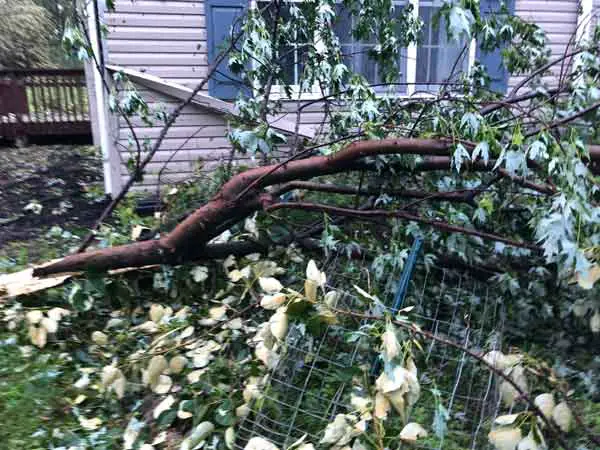
If you are like me, your saltwater aquarium is almost a member of the family–and if you are in the midst of a hurricane or winter storm, you will want to take a few steps to prepare yourself and your aquarium for an extended period without power. The purpose of this article is to provide some advice on how to prepare your aquarium for a hurricane or winter storm–essentially any situation where you may be afraid of losing power to your aquarium.
What can you do to prepare your aquarium for a hurricane or winter storm?
Let me first get one sad but true item out of the way. If your house is in the path of a major hurricane or another life-altering storm, there is pretty much nothing you can do that will matter, other than evacuate yourself, your family, and any of the animals you can. If you are in harm’s way and you have time to get prepared, please get yourself and your animals out of there.

The aftermath is generally unsuitable for any of us, for a period of time. If that is what you’re preparing for, my sincere thoughts, hope and prayers are with you and your family to remain safe.
With that said, the rest of this article will focus on the things you can do to prepare for an indirect hit from a serious winter storm or hurricane. This is essentially preparing for a potentially extended period of time without power or temperature control.
Step 1–Assess the risks and Establish the priorities
The first thing to do is try to be clear and establish your priorities. If I hadn’t been through a few storms before with my family, I probably wouldn’t have even known to write that (since the rest of the myopic focus of this article is about taking care of the family members that live in your reef tank), but the obvious top priority is to make sure you and your family are safe and healthy AND to allow yourself the time and mental energy to focus on them while you are dealing with the storm.
I found myself so preoccupied with dealing with my tank, that I neglected the needs of some of my family, for a short period of time. Luckily I snapped out of it, but am here to attempt to pass that experience on to you. The call-out there is to make sure you prep in advance, if possible so that you can execute your plan simply and not have to be too hands-on in maintaining your tank.
Once you have that settled, and you have room in your mind to start triaging the fish tank, let’s talk about the top priorities when managing power loss for your saltwater aquarium.

If the power goes out, all the life-sustaining equipment that you have running will stop operating. So let’s dig a little deeper into what that means for your corals, fish, and other invertebrates–and what you can do about it. Your 4 top priorities when dealing with a winter storm or hurricane and are dealing with power loss are:
- Maintaining sufficient oxygen levels and water circulation after the loss of return pumps and powerheads
- Managing temperature changes (heat loss or gain to the aquarium water, depending on the scenario) due to loss of heaters and chillers
- Removal or conversion of waste after the loss of filtration and protein skimming
- Photosynthesis and meeting nutritional needs after the loss of adequate reef tank lighting
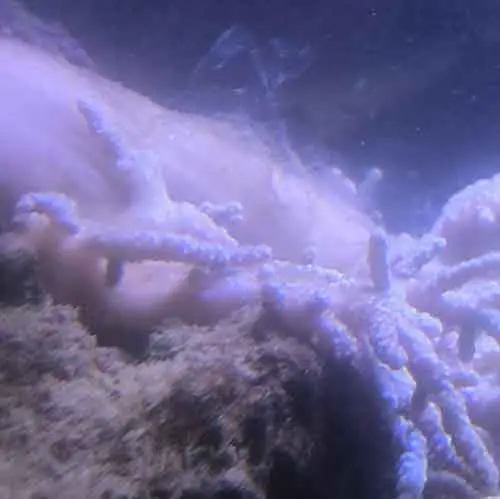
1) Loss of aeration, return pumps and powerheads: maintaining sufficient oxygen levels and water circulation
Loss of circulation, due to loss of electricity to your return pump (if you have a sump) and your powerheads is your number one issue to fight. The circulation pumps in your saltwater aquarium help facilitate gas exchange, essentially keeping your water well-oxygenated. Without adequate water movement, the water in your tank can become quickly depleted of life-sustaining oxygen—which will rapidly become your number one issue if you lose power.
2) Loss of heaters and chillers: managing temperature changes (heat loss or gain)
The second biggest issue your saltwater aquarium will face, if you lose power due to a winter storm or hurricane is heat loss. Without power, your electric heater will no longer be able to keep your saltwater aquarium at a stable temperature—and while a big body of saltwater, like your aquarium, will hold its temperature well when compared with the air in your house, the fact of the matter is that your saltwater aquarium will lose heat and get cold. If the water temperature drops too low, you WILL suffer losses.

Of course, the risk of losses from a temperature drop is greater depending on how significant the temperature is in the room. The risk from too much heat, if you live in a warm climate, is unfortunately just as deadly.
3) Loss of filtration: removal or the conversion of waste
The third biggest issue your saltwater aquarium will face, if you lose power because of a winter storm or hurricane is the loss of filtration. Your biological filter ordinarily turns poisonous ammonia and less problematic nitrite into less toxic nitrate. When the power goes out, you are no longer able to circulate water through your biological filter (or over your live rock, live sand, etc.) and the water parameters will deteriorate.

4) Loss of aquarium lighting: photosynthesis and meeting nutritional requirements
Probably the piece of equipment that consumes the most electricity in your saltwater aquarium is your lights, even if they are LED, which likely consumes hundreds of watts of electricity every hour (when the power is on). Having the lights go out above your aquarium during a power outage is actually a tiny blessing in disguise.
Sure, your corals, clams, and anemones won’t be able to convert any light to energy, via photosynthesis, but with the lights out, many aquatic species slow down their activities conserve energy—a survival tactic that may just help them through any power outage you may face. Loss of lighting, while it may add some stress to the inhabitants of your tank, should not be a major concern of yours during a power outage.
Step 2-Think ‘minimally’
The next thing you need to do is think ‘minimally’. You don’t have a lot of time–and you don’t have the luxury of power–so you have to quickly identify what the most important things are that you can do to provide some water circulation (and oxygenation), maintain the water temperature, and (especially if you expect to be without power for a while) keep ammonia levels down.
Hopefully, you noted that I didn’t mention feeding your fish or coral at all. At a time like this, your fish and corals can survive for a few days without eating. Adding food to the water is just going to foul it faster–so slow everything down and focus on first things first.
Step 3-Manage water circulation and oxygenation
Perhaps the easiest thing you could do to prepare your aquarium for a hurricane or winter storm is to purchase a battery backup air pump and a sponge filter.
Your primary goal with the battery backup air pump is to oxygenate your aquarium and create some water flow. It is possible to use an airline splitter if you want water movement in 2 areas of the aquarium—but I don’t recommend splitting beyond that—depending on the depth of your tank, the pump may not be able to overcome the head-pressure on the airline if you split it too many times.
Some of the battery-powered backup pumps will go on automatically when a power loss is detected, whereas other models need to be turned on manually. There are pros and cons for each style. The biggest benefit of the model that turns on automatically if power is lost—is that you don’t have to be there to turn it on. I consider this to be an awesome benefit if you are away from your home when the power goes out—you will know that the pump will go on without worry.
However, in the event of a big storm—like the one that recently hit us, you will likely be home—and I, therefore, would want to be in control of turning on the pump when I want it on—in case I need to conserve batteries.
Of course, these pumps run o D-batteries, so be sure to have plenty of those on-hand—and always use a check valve on your airline to make sure you don’t start an accidental siphon when you shut the pump off.
If you want to add some additional filtration capacity, you can easily and inexpensively connect a sponge filter up to your battery backup air pump.
The sponge filter will increase the resistance on the airline—so if you are using a sponge filter—I recommend NOT splitting the airline at all—if you need water movement in more than one area of the tank—then I recommend getting 2 pumps, rather than just splitting the air from one. If you have the luxury of planning for this in advance, I recommend you keep the sponge in your sump—in good times and in bad, so that it is already ‘seeded’ with beneficial bacteria when you need it.
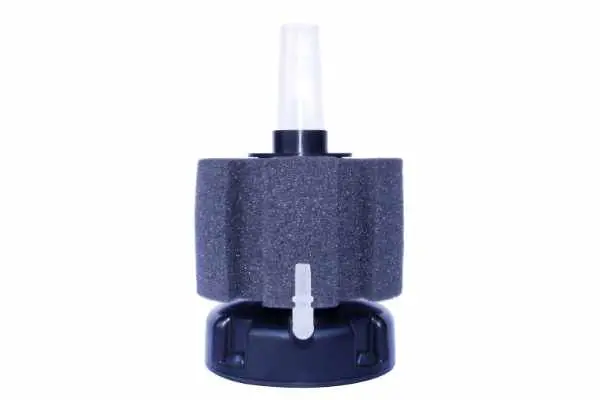
If your saltwater aquarium has a sufficient amount of live rock, live sand, or another biologically active substrate, you may not need the sponge filter—especially if the power outage is short in duration. But if you are planning for a longer duration power failure, or if your tank does not have a lot of ‘natural’ biological filtration, then a sponge filter is a good consideration.
Step 4: Reduce heat loss
A great way to slow down and reduce the heat lost from your aquarium during a hurricane or winter storm is to insulate it. I bought a 10-pack of mylar emergency blankets from Amazon. If the power goes out, I plan to use duct tape to wrap around my aquarium. The Emergency Mylar Thermal Blankets work by reflecting thermal energy (heat) back and keeping it in.
Step 5: Establish alternate sources of power
Another tool you can use to supply power to your aquarium and run your electrical equipment (like an air pump and heater) normally is a Power Inverter.
A power inverter works by converting battery power into the type of electricity that comes from your wall socket. Of course, the other thing you need for this work is a car battery. If you don’t want to hook up a car battery inside your house, another option is to use the cigarette lighter style Power inverter for your car.
Then you can run an extension cord out to the car and plug it in there without having to worry about hooking things up to a battery if that kind of thing intimidates you. Here is a picture of what that looks like–note the cigarette lighter plug on the end of the electrical wire.
While this style of power inverter is most convenient (you don’t have much DIY work at all), it is risky–because you run the risk of depleting your car battery–which you will surely need if you have to evacuate–or just decide to drive away. So be sure not to drain your battery too much–and consider turning on your car before using it–to ensure you can start the car and allow the alternator in your car to recharge the battery. This is not the most efficient means of converting energy to electricity, but it will get you through in a pinch.
I recommend you use the power inverters to run your heater periodically to keep the water at a suitable temperature.
Backup generator
Of course, you could get a Backup electrical generator –this is a piece of equipment that will not unlike the system I concocted in the section above. The generators typically work on diesel or gasoline fuel. Energy from the combustion engine is converted into electricity. Backup generators can create a lot more electricity and can be used to provide power for your refrigerator and other essential electrical items in your home.
My favorite type of generator is the dual-source variety, which will run on propane or gasoline. I bought one like this, here:

It runs on either propane or gasoline. Since gasoline ‘goes bad’ over time, it’s tough to make sure you always have some backup gas to run the generator with. Propane, on the other hand, doesn’t go bad. It will store very nicely in containers.
When my power failed this storm, I simply hooked up our backup propane and instantly had power back.
If you have a lot of time to prepare
Hopefully, you found this article while researching or surfing around when you don’t have a storm barreling towards your house. If that’s the case, and if you have some time, I do strongly recommend you pick up a few of the essentials. At a bare minimum, you will want a battery-operated air pump. It can’t hurt to pick up an inexpensive sponge filter, while you’re at it. What I do is leave my sponge filters (not plugged in) in my sump area so that they are naturally colonized with bacteria for whenever I need them (power failure or setting up my quarantine tank for a new arrival).
Next up, depending on your budget, consider purchasing a generator–perhaps not large enough for the whole house, but at least large enough to run your heater and a pump. This may seem like an expensive, luxury purchase–but you’ll thank me if you’re in a situation where you need one.
Also, get some of the maintenance out of the way early–do a water change, make sure your tank is in tip-top shape before the trouble starts!
If it’s already too late and you lost power without the right gear
If, on the other hand, you are reading this while the storm is imminent, and you don’t have time to get new gear, or if you’re reading on your phone while the power is out.
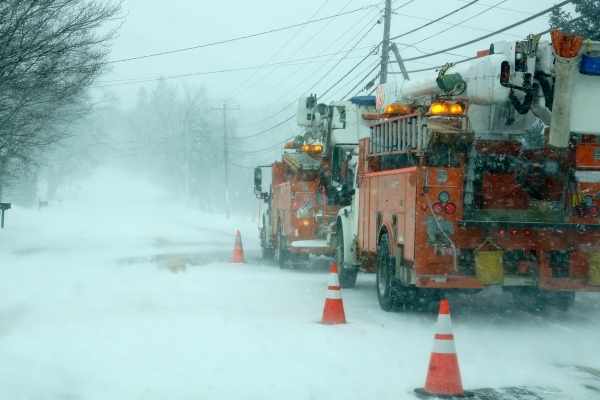
Here are a few quick tips:
- If you have a lid on the tank, keep it on, try to keep the heat loss to a minimum
- Don’t feed them. They won’t even start to starve for days, adding food will likely make things worse
- Scoop out (or siphon out) some water and pour it back into the tank–get some air between the two and splash the water into the tank to create some flow and aeration.
- Gas exchange happens in space where the air meets the surface of the water. Take a big spoon or something and stir the water up with the spoon occasionally (just remember to close the lid when done)
- The air around you is 21% oxygen. The air you exhale is ~16% oxygen. So, if times are tough (I wouldn’t do this until many hours without power), you can blow bubbles into your tank through a straw to get a little air moving, if you have to…just be careful not to inhale or get water in your mouth. Nobody wants you getting sick trying this stunt.
- Don’t worry about the lights, they will be fine for a day or two
How to prepare your aquarium for a hurricane or severe storm: Summary
Thanks for reading this article on how to prepare your aquarium for a hurricane or winter storm. I think you have seen that involves a little bit of planning/preparation, finding alternate sources of power, and some down-sizing to use only the most critical life-sustaining equipment in your aquarium. I hope the information contained in this article helps you prepare your aquarium for a hurricane or winter storm.
Do you have any tips you can share? Please leave a comment so that others can benefit from your experience.
Written by Albert B. Ulrich III. Updated in December 2020.
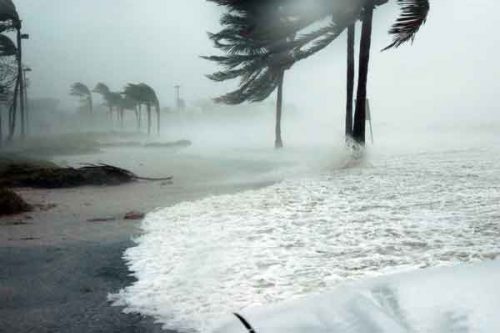






Comments
4 responses to “How to prepare your aquarium for a hurricane or winter storm”
In a pinch, you can pour your tank water back into the tank from a foot or so high over the top of the water to keep oxygenated. Repeat often.
Before Irma hit (rain, strong winds), I did a water change the day before her (or his) arrival to prepare for a power outage. I already knew not to feed, but I also knew that fresh water would reduce the deterioration of water quality. My power was out for a day and a half, so I only lost a snail. I am going to look into the battery powered filter heads though. Good post.
Glad to hear your tank did fine during the power outage. Battery backup air pumps are certainly a nice thing to have.
Thanks for the great suggestion, Angelann!